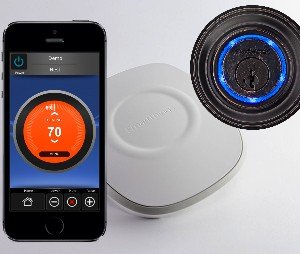
 If Consumer Reports says home automation is finally here, well, it must be. We won’t argue about the fact that true home automation has been achievable for years, or that that an Internet of Things (IoT) light bulb and an integrated automation system aren’t the same thing, because, whatever.
If Consumer Reports says home automation is finally here, well, it must be. We won’t argue about the fact that true home automation has been achievable for years, or that that an Internet of Things (IoT) light bulb and an integrated automation system aren’t the same thing, because, whatever.
Still, there’s no denying that IoT smart home devices are falling out of the cloud like pollen on my car hood. A takes a look at some of the new smart home devices available for do-it-yourself home-improvers and came to a mix of conclusions.
But first, of course, some definitions and numbers.
When we say Internet of Things, generally we’re speaking about products that connect, at some level, to a wireless network. Sometimes the smarts for these things are in a cloud server far away, but often the products require a central hub installed in the home and connection to the user’s network. Smart Things, Lowe’s Iris, Revolv, Staples Connect and Insteon Hub all work essentially that way, though they speak a variety of wireless languages. This new landscape of products is making it easier for people to integrate unified control over systems such as lighting, temperature control, window shades, security monitoring and other odds and ends. Even big name appliance manufacturers are slowly getting into the act.
From an Electronic House point of view, these systems and products are different, though part of, the extended family of home automation from companies like AMX, Crestron, Control4, Elan, Savant and others.
And about those numbers–Consumer Reports reports that Cisco says by the year 2020 there will be 37 billion smart products on the market. Of the readers Consumer Reports surveyed, 20 percent say they use some smart home products now, and 70 percent of the ones who don’t, plan to in the near future. Another research firm predicted that there will be 10 million smart connected devices by 2017.
The report rightly pointed out the importance of a robust and secure wireless network when starting your own IoP smart home system. CR recounted a story in which an internet-connected refrigerator was the victim of a cyber-hacking attack–owners returned home and found all their beer had been slurped through their cable modem.
Where the CR report goes wrong, though, is in stating that the “promise of an easy, centrally controlled smart home has yet to catch up with reality.” I read similar statements all the time, mostly from mainstream news outlets, and I always want to ask something like “what reality?” Maybe the question would better be “at what price?”
The easy, centrally-controlled smart home has been available for years. Just take a look at any of our recent Home of the Year winners and you’ll see that these systems are not only available, they’re also fairly common. The problem, though, is that the ultimate connected home is not available at big box prices. And why should we expect it to be? Do you want to trust your home and your family’s security to something you can throw in a shopping cart?
RELATED VIDEO











